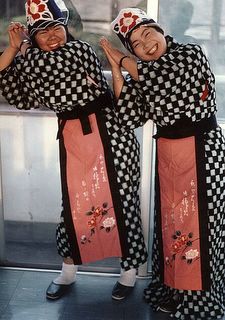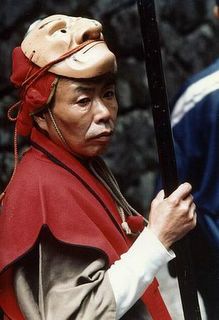
Gateway to Sabah, the land below the wind.
The Kota Kinabalu International Airport is the main gateway to Sabah from the outside world. Kota Kinabalu International Airport is located 10 Km from the town centre. It is the second busiest airport in Malaysia. For those of you traveling from Europe, you have to go through Kuala Lumpur International Airport to get to Sabah. From Kuala Lumpur International Airport there are a lot of flights to Kota Kinabalu International Airport. Mostly the flights are by Malaysia Airlines System and Air Asia. Air Asia offer cheap airlines ticket but my advise go for Malaysia Airlines System. Air Asia tends to delay their flight sometimes up to 24 hours. You will end up paying for food, hotels etc.. more than what you save in the first place.

Due to its central location, the Kota Kinabalu International Airport is less than three hours flight from most of the ASEAN capitals. There are direct flights to Hong Kong, Tokyo, Seoul, Taipei, Kaohsiung, Singapore, Manila, Kuala Lumpur, Cebu, Davao, Brunei and Labuan linking Kota Kinabalu with the outside world, especially the BIMP-EAGA and the Asia-Pacific rim. The Kota Kinabalu International Airport is well equipped to take the B747, A330, MD11, etc. Airlines.

The airline operating within the major towns in Sabah is the national carrier, the Malaysia Airlines System or Malaysia Airlines. Other airlines which operate in and out of Kota Kinabalu are Air Asia, Australian Airlines, Dragonair, FAT, Malaysia Airlines, Northern Airlines Sanya, Royal Brunei, Transasia, Transmile Air Services, UNI Airways, Vision Air, Xiamen Airlines.Once you are in Kota Kinabalu International Airport, you have to go through the normal procedure of luggage, custom, passport etc you know the drill. Once you step out of the building, you are in Kota Kinabalu, Sabah. For me the first time I step out of Kota Kinabalu International Airport I feel the airport is too small compared to the Kuala Lumpur International Airport that I step in. Kota Kinabalu International Airport is not very far from the Kota Kinabalu city, infact if you feel like it you can actually walk to the nearest hotel. The nearest hotel is Airport View Hotel. Very near to the airport (about 2 km J).
If you don’t feel like walking, then there is airport taxi service. The fares depend on your destination roughly about RM10++. Just tell the girls at the counter where you want to go and she will tell you how much then you just pay. If you don€™t know where to go then ask her for what ever information you need. Generally people in Sabah are very friendly. If u got the time ask her name and phone number, if you are lucky you got a partner for dinner that is if you are traveling alone or with male friends. If you don’t want to take airport taxi you can always take mini bus which is actually a van. Take a short walk to the main road and raise your hand when you see these mini buses. From airport to Kota Kinabalu town only RM1 last I check. My advice is, when you are in Kota Kinabalu find a local person to show you around. The taxi/bus driver would be a good start. Make a deal with him if he wants it or he can recommend you to another driver. There are a lot of freelance drivers, just hope you find a good one. I can even recommend you to some good drivers.
The reason why you need local tour guide is that people here tends to overcharge when they see foreigner / tourist. Don’t get offended, I go through the same thing when I was here the 1st time and my hair and skin is the same color as they are just that my dialect a bit different. Nowadays even the local people think I am local. If you don’t have local people to help you then everything will be more expensive. I mean everything such as the food, market item, local souvenir, shirt etc. The only place where you can get fair price is the hotels and supermarkets. No fun in shopping at supermarkets when you travel so far away. I got supermarket just across the street where I am from btw I’m from Kuala Lumpur.
Next time I will give you info about hotels. Lots of hotels here from high price with lots of stars to those cheap hotels. My style I prefer cheap hotels coz even though it’s a cheap hotels some of them have good clean room, good room service and situated near everything. Easier to dine and shop also easier on the pocket. Even better there are lots of small resorts located out of Kota Kinabalu. Most of them have their own private beaches. They are about 10 km away from Kota Kinabalu International Airport. Very quiet, peaceful and a chance for you to see the local people. You can rent a car but don’t go for those car rental services at the airport or hotels. They are way too expensive. Go for outside car rental. A small car usually cost RM 70 / day. If you rent longer the price can go down a bit more. With a car you can learn the roads in Kota Kinabalu in just one night. Trust me, Kota Kinabalu is not that big. It took me one night to drive around and remember places. Better drive during midnight. Less cars you can go anyway you want just watch the road signs and the police. If you are lost just turn back. Lots of place to do U turn.
For now its time for me to bring my baby turbo for a spin. I like to drive around at night. Sometimes at 2 am I just drive around at those night spot looking for leftovers or left behind. Just looking btw.



